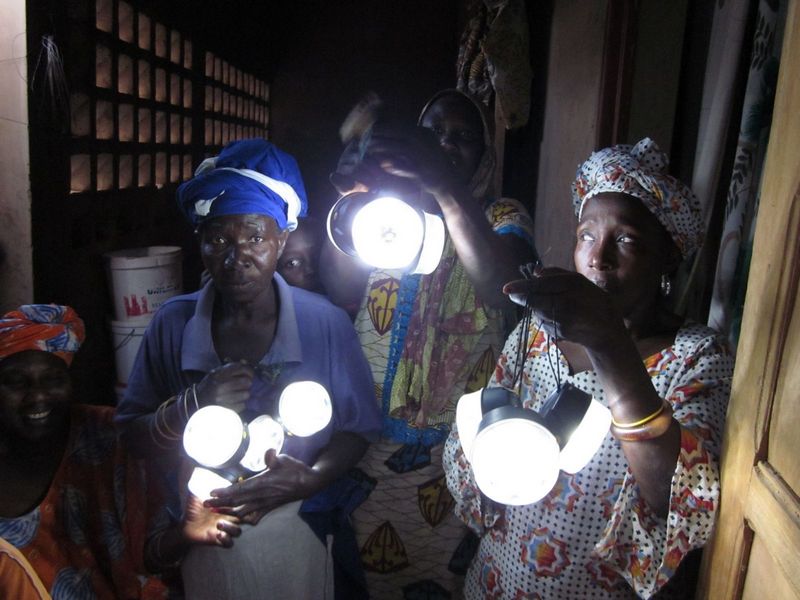
Electricity for lighting accounts for approximately 15 per cent of global power consumption and 5 per cent of worldwide greenhouse gas (GHG) emissions. If a global transition to efficient lighting occurred, these emissions could be reduced by over one-third.
Few actions can reduce carbon emissions as cheaply and easily as the phase-out of inefficient lighting, making it one of the most effective and economically advantageous ways to combat climate change.
The en.lighten initiative is accelerating the transition to energy efficient lighting in developing and emerging countries where electrical demand is expected to grow rapidly.
Current trends indicate that the global demand for electricity for light will be 60% higher by 2030 if there is not a switch to efficient lighting. This means an increase of nearly 4% in global CO2 emissions. en.lighten aims to help the 130 countries that still market inefficient incandescent bulbs switch to more efficient lighting by 2016.
en.lighten assists countries in accelerating market transformation with environmentally sustainable, efficient lighting technologies by:
-
Promoting high performance, efficient technologies in developing countries.
-
Developing a global policy strategy to phase-out inefficient and obsolete lighting products.
-
Substituting traditional fuel-based lighting with modern, efficient alternatives.
Mitigation / Adaptation
Replacing all the world inefficient lighting with energy efficient alternatives would cut the global share of electricity used for lighting by 50% and lead to a 5% reduction in total global electricity consumption. This ambitious transition would also reduce annual CO2 emissions by at least 31 billion tonnes.
The implementation focus for en.lighten is on direct policy and technical assistance to countries that have efficient lighting policy elements in place and are ready to take rapid action to phase out inefficient lamps. The 46 en.lighten Country Partners (representing approximately 20% of the world population) already have some experience with supporting policies and activities, such as massive distributions of compact fluorescent lamps (CFLs). These countries seek to make permanent changes to sustain energy and environmental benefits.
Some countries have begun to adopt minimum energy performance standards. However, most do not yet have comprehensive monitoring, verification and enforcement schemes or collection and recycling programs. Many countries need to strengthen their laboratory and technical testing capabilities before they can progress to verification and enforcement. Thus, en.lighten is facilitating training and capacity building via its private sector partners.
Benefits
Reducing electrical demand decreases the amount of fossil fuels burned to produce electricity, and may allow countries to close older power plants that rely on coal and other fossil fuels. With a global transition to efficient lighting, over 250 large coal power plants could be retired. During a global economic crisis, these savings could be reallocated to social services and, infrastructure projects, including schools, hospitals and roads. It would also allow for expansion of electrical service into underserviced areas or help to improve electrical service in existing areas. Realizing billions of dollars in saved electricity costs could boost economies and create green jobs. Improved access to electricity for millions of people will lead to increased productivity, income and improvement in quality of life for the urban poor.
A transition to energy efficient lighting encourages the sustainable use of natural resources as it reduces the dependence on fossil fuel burning in power plants to produce electricity. The introduction of new, energy efficient technologies encourages environmental sustainability actions which include establishing maximum mercury content limits and responsible end of life management that encompasses collection, and/or recycling programs for spent lamps.
Potential for scaling-up and replication
The en.lighten initiative activities are developed in a way that can be replicated in every country, taking into consideration local circumstances and needs. For example, the Country Lighting Assessments are based on a model that is used for all countries but can accept input data from any country that has its own data collection program. The National Efficient Lighting Strategy development process works similarly: en.lighten offers an agenda, menu of activities, and options for expert technical assistance. Each country chooses the options that will work best to rapidly achieve their transition to efficient lighting.
The Global Efficient Lighting Partnership Programme, launched in 2011, is a voluntary initiative for countries to work with en.lighten to achieve a coordinated national or regional transition to efficient lighting. en.lighten, along with its international partners, provides support to national regulators and/or regional bodies in the development of policies, strategies and actions for the phase-out of inefficient lighting products, while ensuring that the lighting technologies meet global minimum standards and that spent lamps are treated in an environmentally sound manner.
|
   
Images owned by the activity partners, all rights reserved.
|